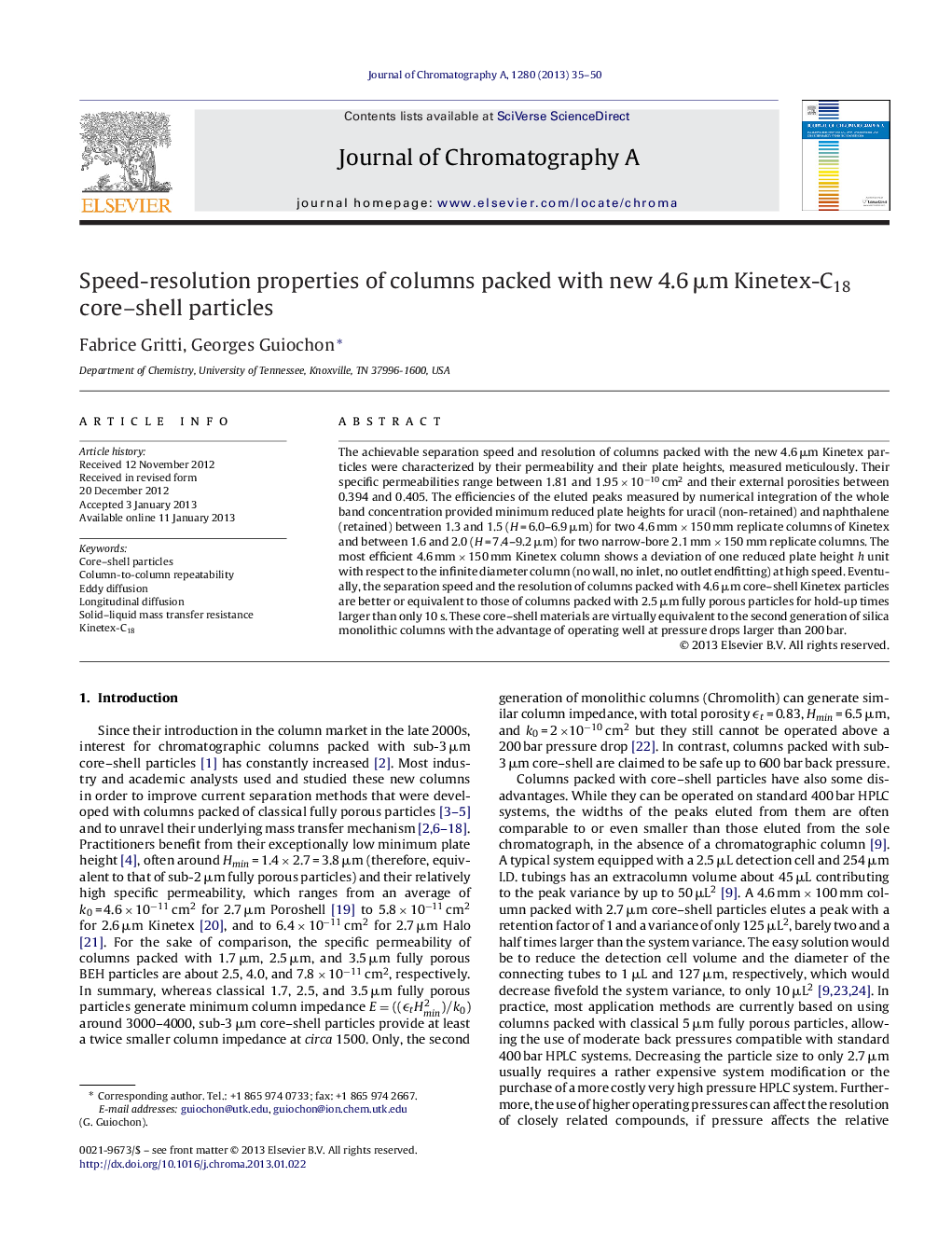| Article ID | Journal | Published Year | Pages | File Type |
|---|---|---|---|---|
| 1201186 | Journal of Chromatography A | 2013 | 16 Pages |
The achievable separation speed and resolution of columns packed with the new 4.6 μm Kinetex particles were characterized by their permeability and their plate heights, measured meticulously. Their specific permeabilities range between 1.81 and 1.95 × 10−10 cm2 and their external porosities between 0.394 and 0.405. The efficiencies of the eluted peaks measured by numerical integration of the whole band concentration provided minimum reduced plate heights for uracil (non-retained) and naphthalene (retained) between 1.3 and 1.5 (H = 6.0–6.9 μm) for two 4.6 mm × 150 mm replicate columns of Kinetex and between 1.6 and 2.0 (H = 7.4–9.2 μm) for two narrow-bore 2.1 mm × 150 mm replicate columns. The most efficient 4.6 mm × 150 mm Kinetex column shows a deviation of one reduced plate height h unit with respect to the infinite diameter column (no wall, no inlet, no outlet endfitting) at high speed. Eventually, the separation speed and the resolution of columns packed with 4.6 μm core–shell Kinetex particles are better or equivalent to those of columns packed with 2.5 μm fully porous particles for hold-up times larger than only 10 s. These core–shell materials are virtually equivalent to the second generation of silica monolithic columns with the advantage of operating well at pressure drops larger than 200 bar.
► Columns packed with Kinetex 4.6 μm particles or 5 μm Luna have the same permeability. ► The 4.6 mm I.D. columns are more efficient than the 2.1 mm I.D. ones. ► The reduced plate heights of 4.6 mm I.D. columns is between 1.3 and 1.5 for a retained compound. ► The high column performance is explained essentially by a more homogeneous column packing. ► These new columns are equivalent to the second generation monolithic columns.
